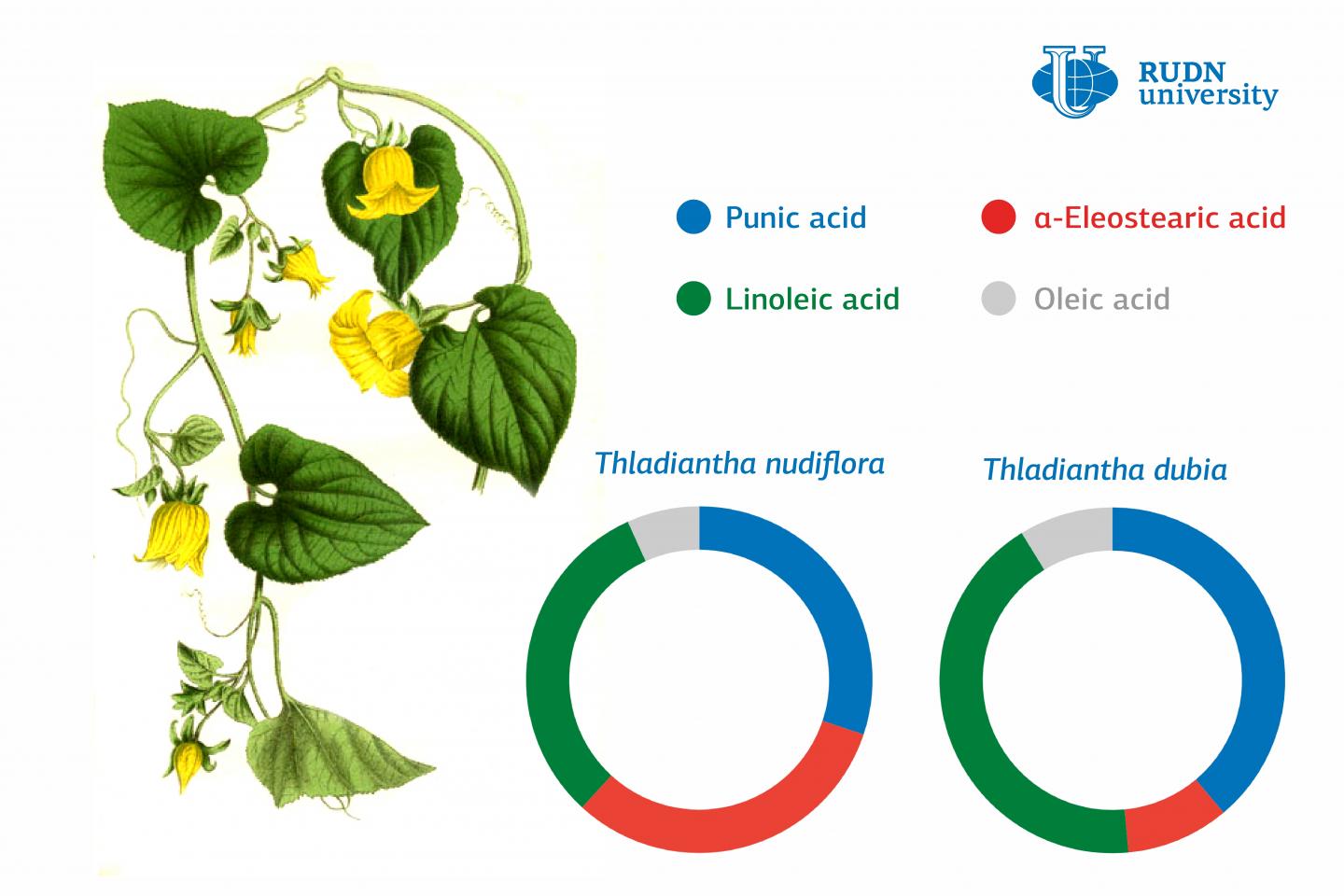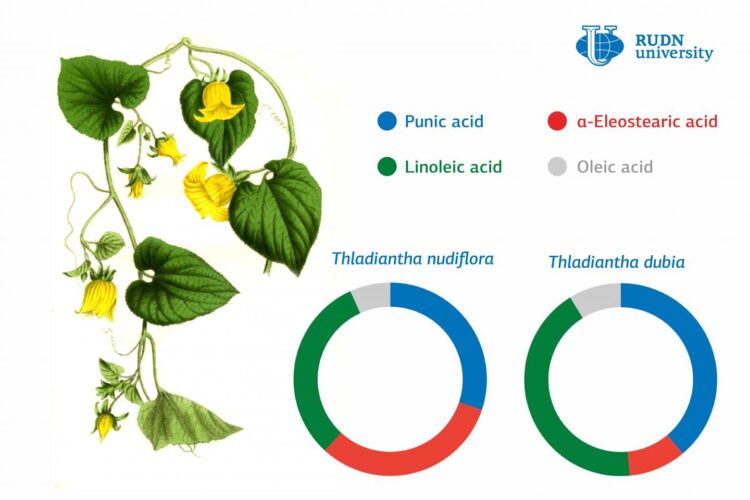
Credit: RUDN University
A team of Russian and Vietnamese chemists from RUDN University, Belgorod State University, Ton Duc Thang University, and the Vietnam Academy of Science and Technology were the first to study the composition of oils extracted from two flowering plants of the genus Thladiantha that are popular in traditional Chinese medicine. The team confirmed that the seeds of both plants contain around 40% oils rich in unsaturated fatty acids. The results of the study were published in the Journal of Oleo Science.
Plant oils consist of triglycerides (molecules that contain three acid residues), and the value of any type of oil for nutrition, medicine, and other applications is determined by the type of fatty acid residues its triglycerides contain. Unsaturated conjugated fatty acids with several dibonds between the atoms of carbon have anti-tumor properties and help combat obesity, inflammations, and diabetes. An international team of chemists from RUDN University was the first to identify the fatty acid residue content in the seeds of T. nudiflora and T. dubia, two plants from the genus of tubergourd (Thladiantha). Tubergourds are common in Southeast Asia and are often used as medicinal plants in traditional Chinese medicine. However, until recently the composition of their seed oils remained understudied.
“Triglycerides are the most important components of animal and plant oils. Knowing the quantitative and qualitative parameters of seed oil fats, one can understand the so-called fatty acid composition of the oil that shows whether it is beneficial for human health. This information can be used to identify counterfeit oils,” said Prof. Olga Kovalchukova, a PhD in Chemistry from the Department of General Chemistry at RUDN University.
The team used spectral and chromatographic methods to study the oils and a green technique to separate their components. A 1:3:17 mixture of fats, urea, and ethanol was kept in the freezer at –20? for 12 hours and then filtered. This way the team eliminated saturated fats from the oils.
Based on the study of the extract, the team concluded that valuable oils amounted to 37.1% and 40.3% of the seed weight of T. dubia and T. nudiflora, respectively. The chemists identified 15 types of triglycerides in such oils. Among all acid residues in them, four unsaturated acids prevailed: the volume of punicic acid amounted to 35.6% mole fractions in the T. dubia oil and 27% mole fractions in the T. nudiflora. oil; of linoleic acid–to 40% and 28%, respectively; of oleic acid–to 8% and 6%, respectively. The most interesting discovery was alpha-elaeosteraic acid with 28% content in the T. nudiflora oil. Its molecule contains three conjugated double bonds which make it toxic for some types of cancer.
“We were the first to analyze the quantitative and the qualitative content of fatty acids in tubergourd oils. We also confirmed that saturated and unsaturated fatty acids can be separated in the products of seed oil saponification by using urea crystals at –20?. This is a simple method that helps preserve all valuable unsaturated fatty acids,” added Prof. Olga Kovalchukova.
###
Media Contact
V.V. Antonova
[email protected]
Related Journal Article
http://dx.





